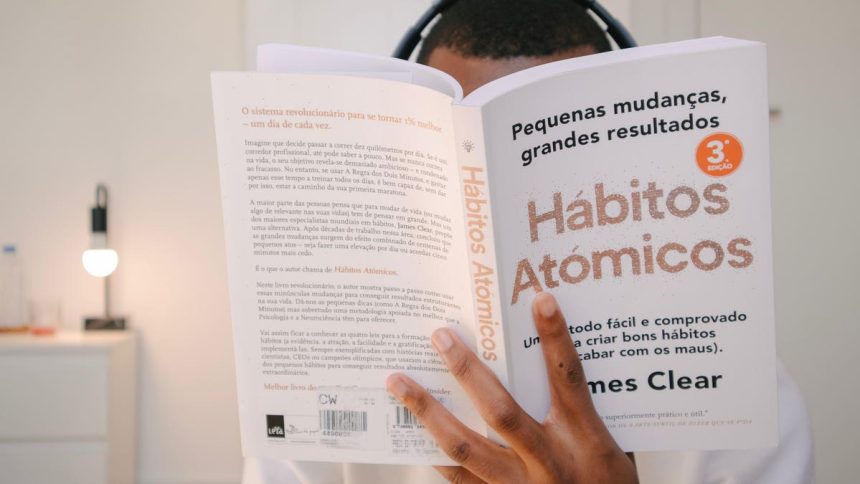Atomic Habits by James Clear has sold over 15 million copies worldwide and been translated into over 50 languages. Described as engaging, relatable and accessible, the book helps people “build good habits and break bad ones.” For entrepreneurs especially, good habits are essential. With so much relying on you: people, clients and your family, there’s no room for inefficient practices that slow you down and prevent you from achieving your potential.
While the 320-page text is packed with stories and concepts that you can apply, there are six that are especially relevant for ambitious leaders. Combining these with insights from your work and responses from ChatGPT, you can make powerful changes that will bring benefits for years.
How to apply Atomic Habits to your business using ChatGPT
Make 1% improvement
If you improved by just 1% every day, in a year you would be 37 times better than you are right now. That’s huge. Incremental changes amount to tremendous results for you and your business.
Choose the area you want to improve and set to work on that tiny daily increase, then watch as the compounding effects take over. Use this prompt to find out how you do it in practice.
“I want to become better at [enter your area for improvement] by approximately 1% every single day, inspired by the concept of marginal gains. At the moment I would describe my proficiency as [explain how good you are now and why]. Can you outline a plan of the small actions I should take each day in order to improve by 1%? Include these within the context of a week, month, quarter and yearly plan.”
Follow the laws of behavioural change
In Atomic Habits, Clear identifies four steps to building a new habit or breaking a bad one: cue, craving, response and reward. This means that you have to make it obvious, make it attractive, make it easy and make it satisfying.
In the example of creating a running habit, make it obvious by leaving your running shorts out. Make it easy by planning the route in advance. Small tweaks are the difference between getting out the door and staying in bed. Here’s the prompt to get ChatGPT’s help.
“I want to start the habit of [explain the habit you want to begin] from a starting point of [explain what you already do]. According to the book, Atomic Habits, I should create a cue, a craving, a response and a reward around this habit. Can you suggest how I might do this in practice?”
Stack your habits
Habit stacking involves pairing a new habit with an existing one. So if you’re already in the habit of having coffee in the morning, pair this with the habit of planning your deep work, or switching your desk to standing mode while the beans are grinding.
The associated neurons then fire together, so the habit in place helps another one stick. It’s easier to keep it going when they work as a pair.
“During my normal day I already do these things regularly: [describe the habits you already have]. Given that I want to start [explain the habits you want to start] how can I use the concept of habit stacking, where you pair a new habit with an existing one, to make this easy and satisfying, so I am more likely to keep it going?”
Optimize your environment
For everything that catches your attention there is attention residue. This means the clutter around your workspace or that noise of someone speaking on loudspeaker is taking away energy you could be using to do your work.
If you can minimize distractions you can enhance your productivity. Get in the habit of performance by removing items that steal your focus. This applies to your personal workspace and your office. Use this prompt to make a change.
“I want to plan my workspace to minimize distractions so I can create better working habits. As I look now, I can see [describe your current field of vision] and I can hear [describe every sound around you]. Suggest ways I can optimize my environment for productivity.”
Adapt your identity
Someone who gets up and begins work straight away probably identifies as a productive person. Someone who makes the effort to see clients face-to-face identifies as being incredibly personable. Someone who never skips a gym session identifies as being healthy.
It’s easier to stick with a habit if it’s part of your identity. You can reverse-engineer this psychology by getting ChatGPT to suggest the identity markers, and seeing how true they ring right now.
“Given the habits that I want to create, can you suggest the identity it would be beneficial for me to adopt? Create a list of mantras that start with, “I am” to describe this identity.”
Find positive peer pressure
Mimetic desire means we subconsciously adopt the values and goals of the people around us, meaning social and peer influence makes a huge difference to our behaviour, even if we think we’re immune.
Hang out with people for whom your desired result is normal. Soon it will become normal to you. Entrepreneurs can not only work to create a positive company culture that rewards good habits, but they can intentionally spend time with those whose habits are ones they want.
“Given the habits I want to create and the person I want to become, can you suggest the groups of people it would be beneficial for me to associate with? What types of people should I look to spend more time with and how could I go about finding them?”
ChatGPT prompts for creating Atomic Habits in your business
Make colossal changes in your life and work by changing your habits for the better. It’s no use reading the book if you’re not going to take any action, and these prompts will help you do just that.
Improve by 1% every day, follow the laws of behavioural change and stack your habits. Optimize your environment, adapt your identity and find groups of people who will steer your course over the long term. Get ChatGPT’s guidance for creating exceptional habits that will ensure your lasting success.
Read the full article here










